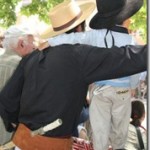From hundreds of sapphire lakes in the foothills of the Andes to the booming vacation town of Bariloche, the Northern Lake District of Patagonia is an enchanting traveler’s dream.
An excerpt from Eddy Ancinas’ description in Fodor’s Patagonia Guide: Argentina’s Lake District
Hundreds of sapphire lakes lie hidden amidst the snow-covered peaks of the Andes on the western frontier with Chile, in what has become the most popular tourist area in Patagonia—the Northern Lake District. Bariloche is becoming the booming vacation town in the center of it all.
Parque National Lanín, in Neuquí©n Province, and the neighboring Parque Nacional Nahuel Huapi, in Río Negro Province, add up to 2.5 million acres of natural preserve. South of Bariloche and the Cholila Valley and northwest of Esquel, the Parque Nacional los Alerces, named for its 2,000-year-old alerce trees, covers 2,630 square km (1,015 square mi) of mountains, forests, and lakes, with only one dirt road leading into it.
Outdoor activities and a wide variety of lodgings in extraordinary settings attract visitors year-round. In winter, skiers come to Cerro Catedral for its size and terrain, superb setting overlooking Nahuel Huapi Lake, and its proximity to Bariloche. Smaller areas such as Chapelco in San Martín de los andes, La Hoya in Esquel, and Cerro Bayo in Villa La Angostrua attract mostly Argentines, and lots of Brazilians.
In spring, ribbons of pink and purple lupine line the roads and fill the mountain meadows along the Seven Lakes Route or Route 40 south to Esquel. Hikers and horseback riders will discover waterfalls cascading from mountaintops into deep, dark canyons. From November to March, fishing enthusiasts reel in the swollen rivers, alive with feisty trout or salmon.
Welsh farmers have grown wheat and raised sheep and cattle on the vast open plains and valleys of Chubut since 1865, and many of their descendant continue to live and work on the land, while preserving their Welsh culture in music, food, and architecture.
See more of Eddy’s Tips and Trips on Patagonia























